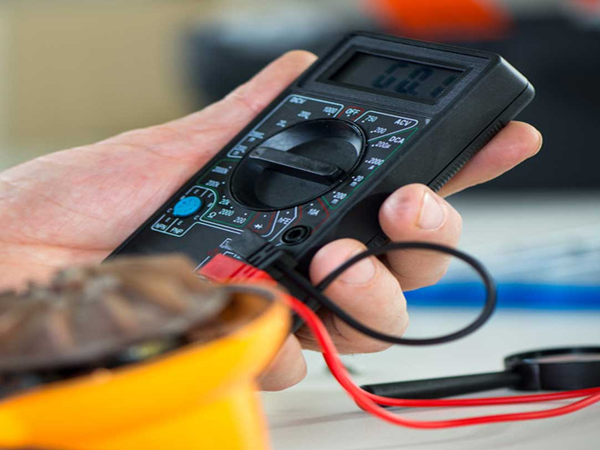Without doubt the hardest tests to carry out accurately are the continuity tests. The maxim here is ‘repeatable and consistent results’. So, let’s look at some of the things that could adversely affect your results.
Poor contact of probes and crocodile clips
Making sure that you have a good contact is key to your results. Probes should be pin sharp to break through crud and crocodile clips most of which in my opinion are useless toys, need to be clamped onto conductors and held tight with your fingers. There are after-market ones that I use that seldom fall off because they have extra powerful springs and are a far better design for our work.
Nulling leads
While talking about the crappy design of crocodile leads can urge you to first of all always null your leads using the crocodile clips, but do it with the solid ‘anvil’ part of the clips together otherwise you are measuring the resistance through the clip hinges that won’t be there when the clips are gripping with both jaws around the conductor.
Switches in circuit
You would think that a switch in the ‘on’ position would have reasonably low resistance, but that is not always the case especially with old switches that have arced and sparked and got generally cruddy. Often these can be cleared by operating the switch a few times or in the worst case removed and a Wago used to short the switch lines.
But how do we know that the line is a higher-than-expected reading? See my post on testing lighting circuits.
Sockets in circuit
When performing an R1+R2 or R1+Rn on Ring Final Circuits you are required to interconnect conductors to form a figure of eight and take readings at every socket on the ring and if R1+R2 are being tested then it is a requirement to also test the polarity. However, if the socket shutters are dirty or the switches are old, once again you have the problem of poor readings. Sometimes socket shutter resistance can be improved by removing and re-inserting the test plug several times to clean them, similarly the switches can be sometimes improved by operating them.
So what can be done if neither works?
You probably have no option other than to remove the socket faces and take a reading from the lovely shiny screws on the terminals at the back of the socket face, remembering to check polarity from the front through the socket as per normal (it’s just an open or closed circuit reading we are looking for) – see photos
Putting yourself in circuit
This is one I’ve not seen too often and was brought to my attention at a standardisation meeting with my good friends at All Electrical Training in Harlow. It occurs where a student uses the probes instead of crocodile clips and holds them onto the conductors with his bare hands. Well, if we take the resistance of the human body at about 100 Ohms (fingertip to fingertip) then add the resistance of the conductor under test in parallel it is unlikely to make a difference of more than a few hundred thousandths of an Ohm. However more likely is that the contact will be poor and the result of the conductor continuity test doubtful.
Repeatable and consistent.

